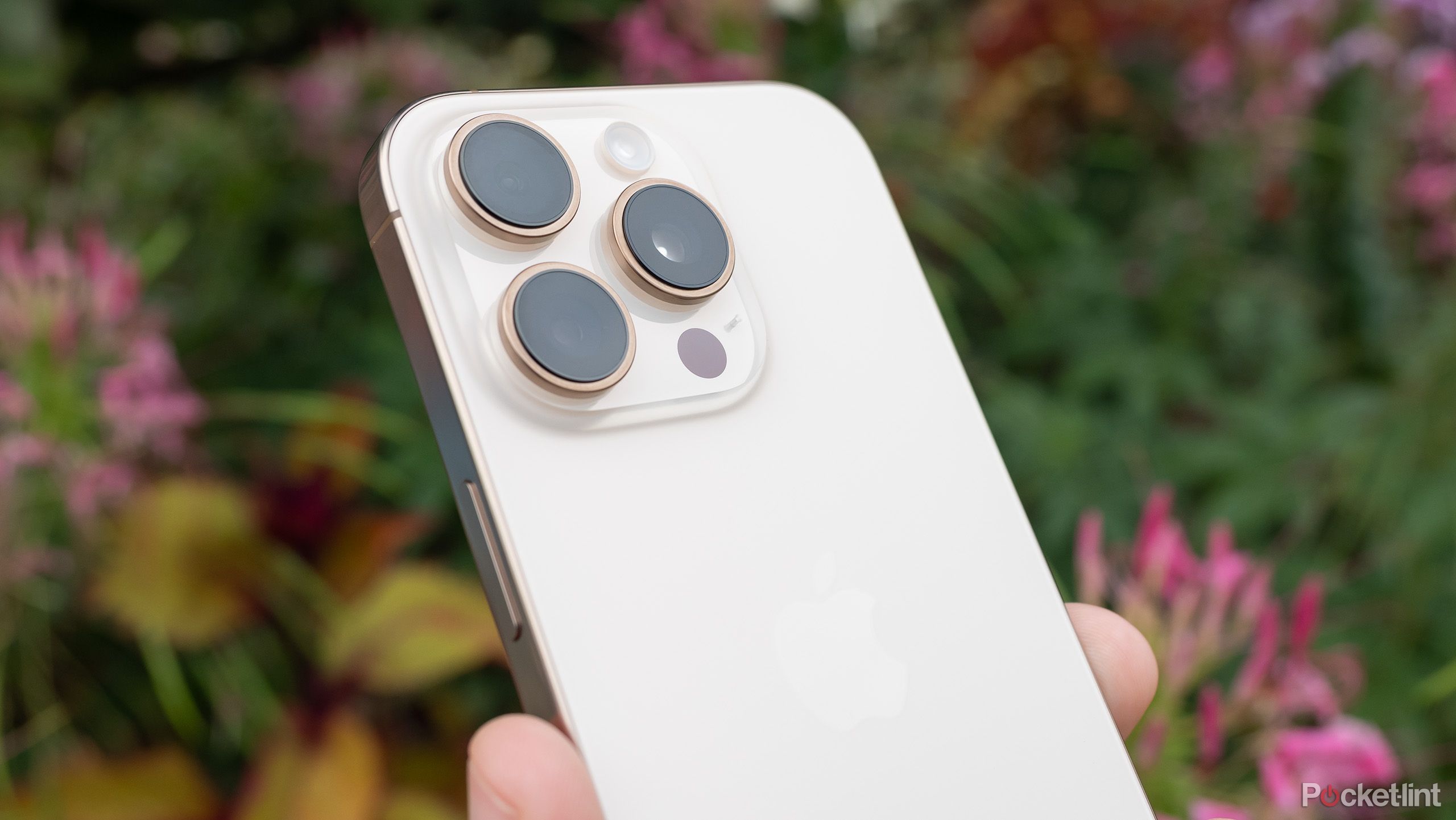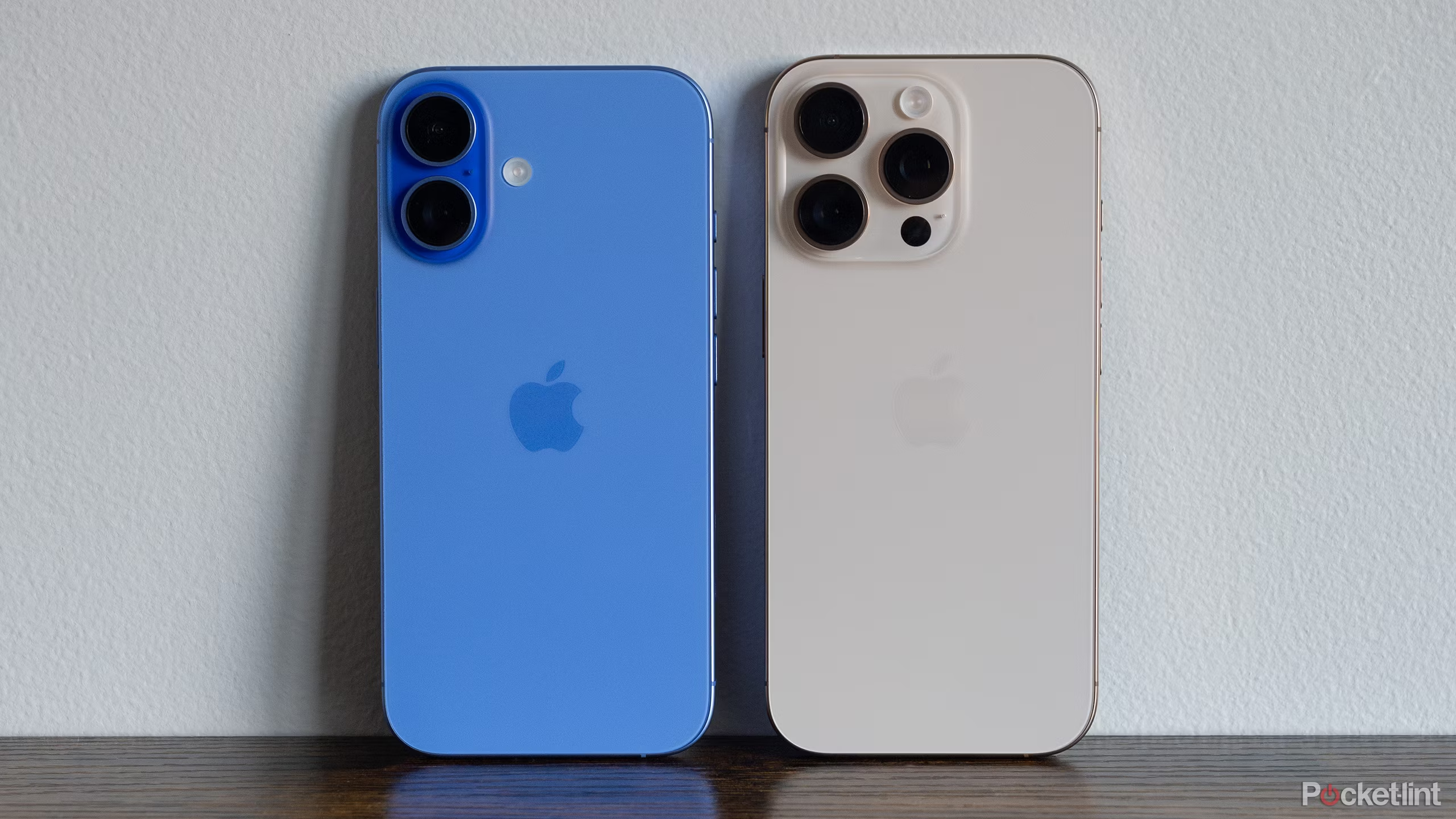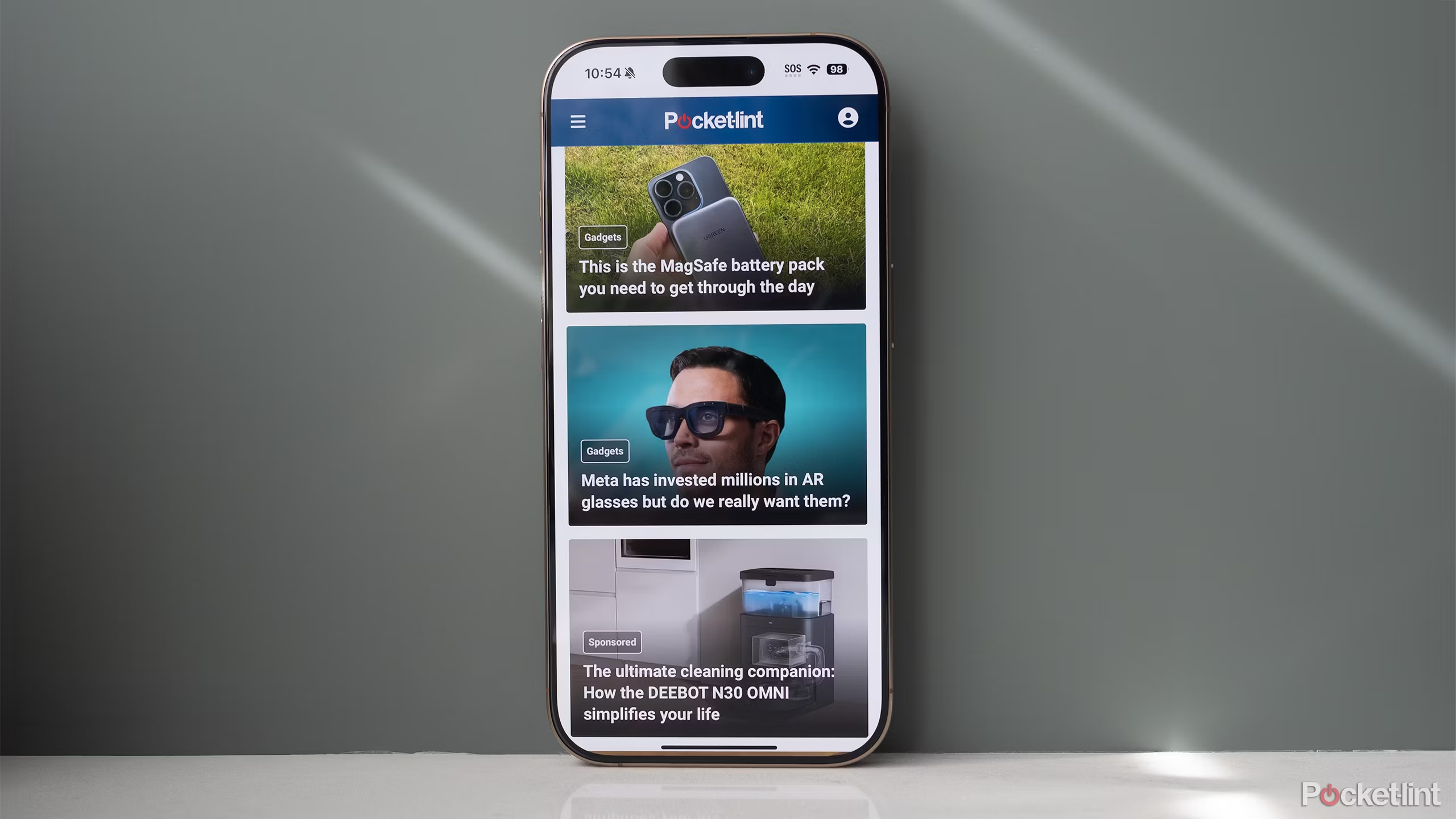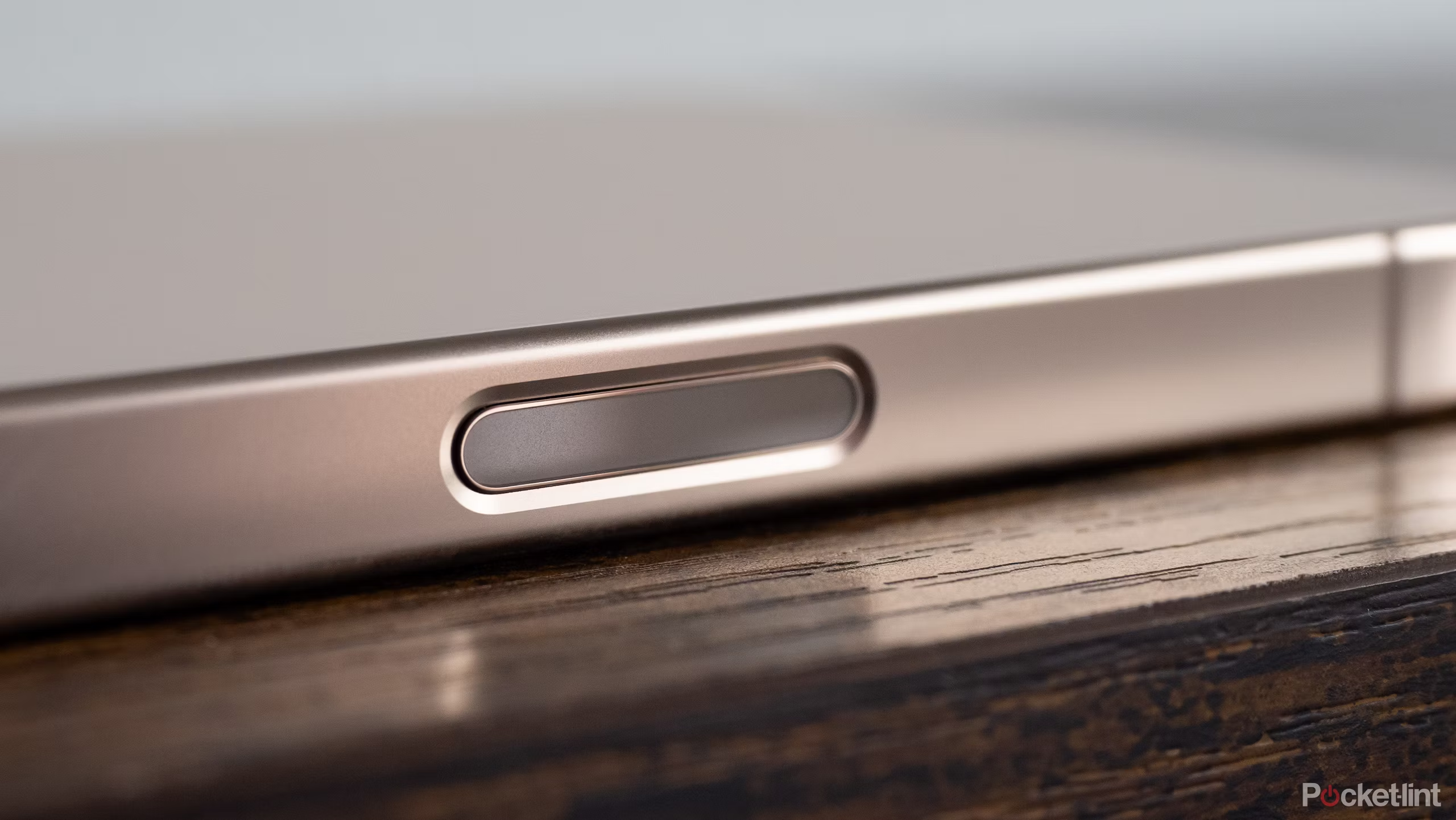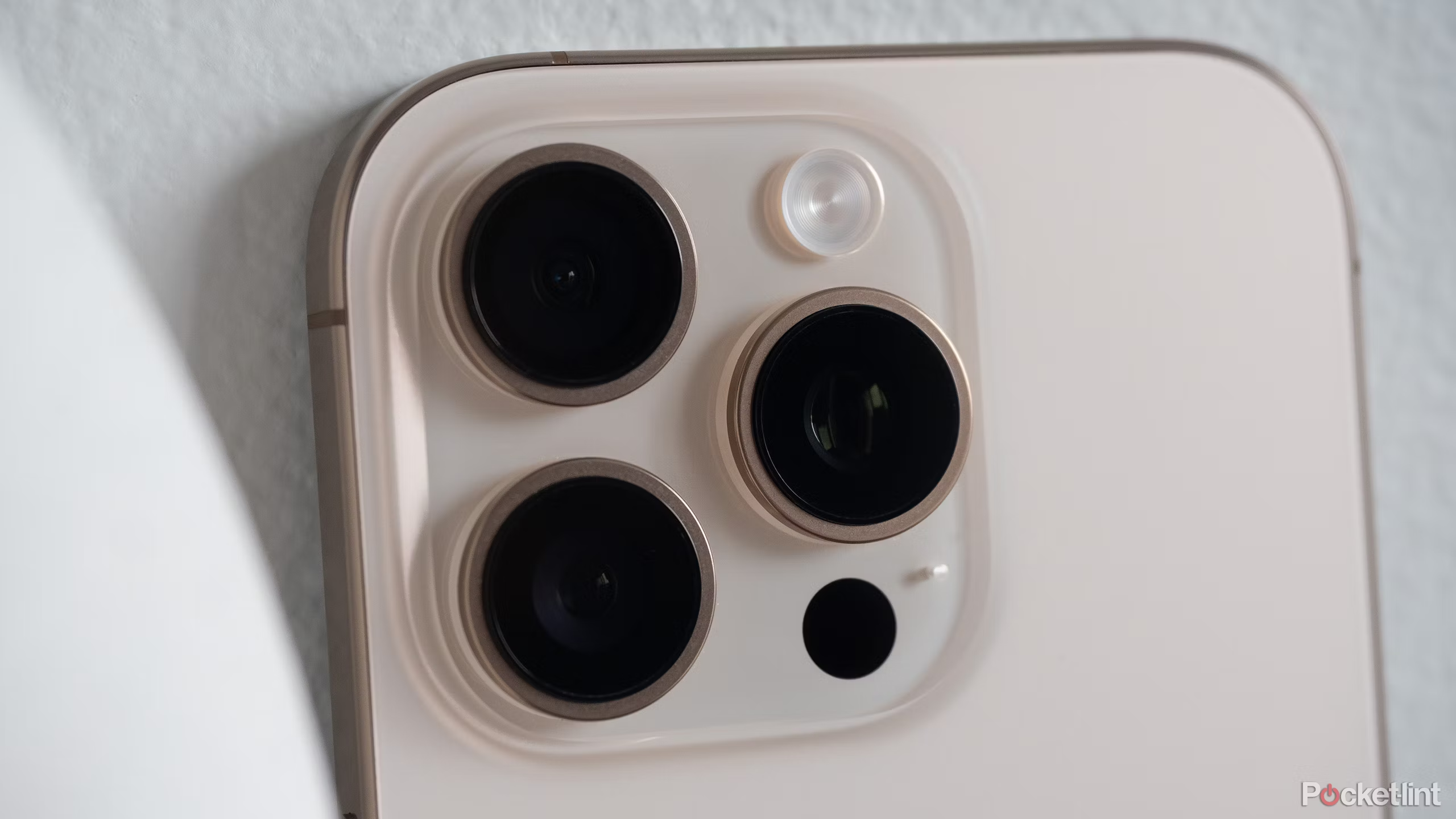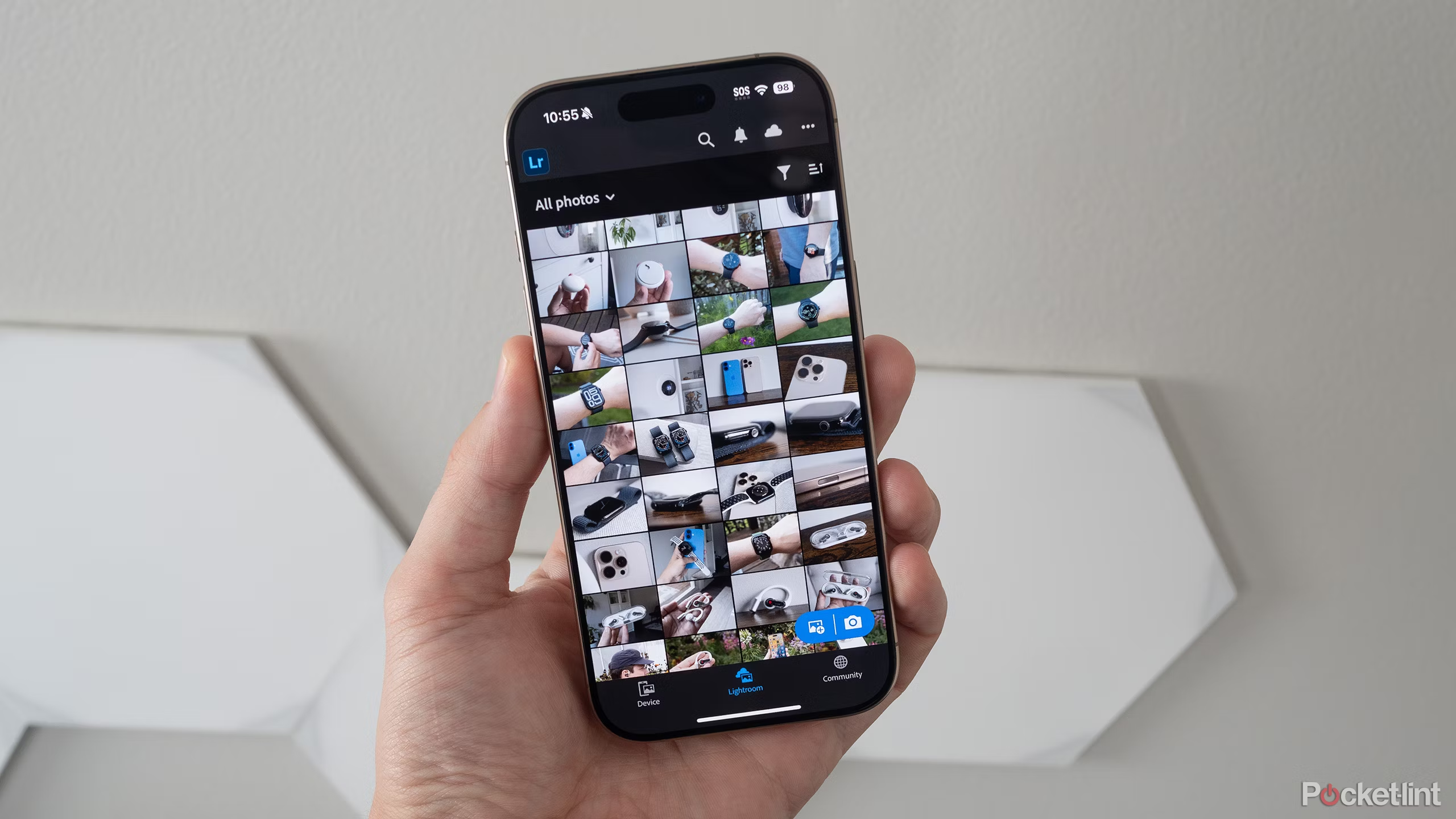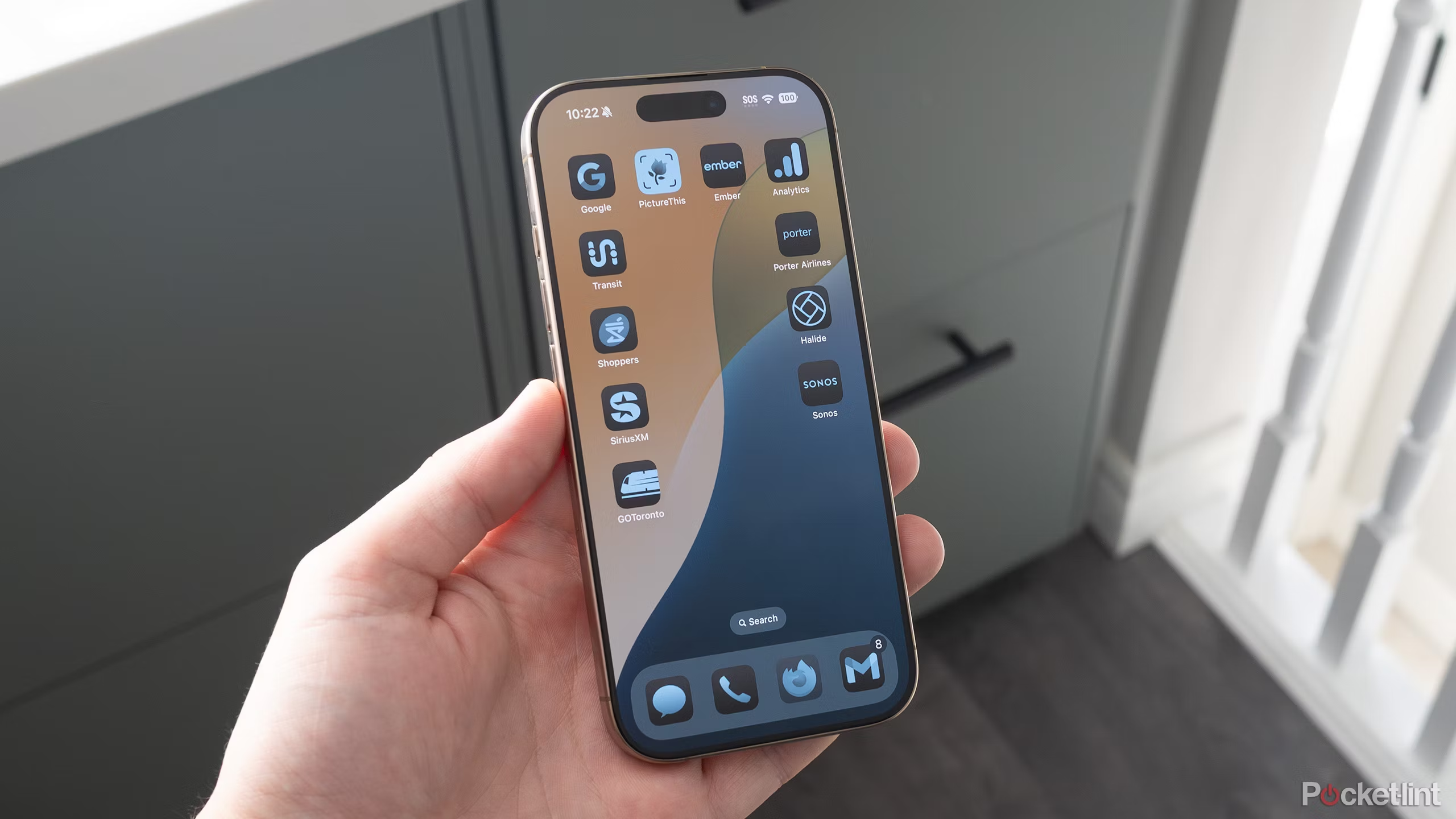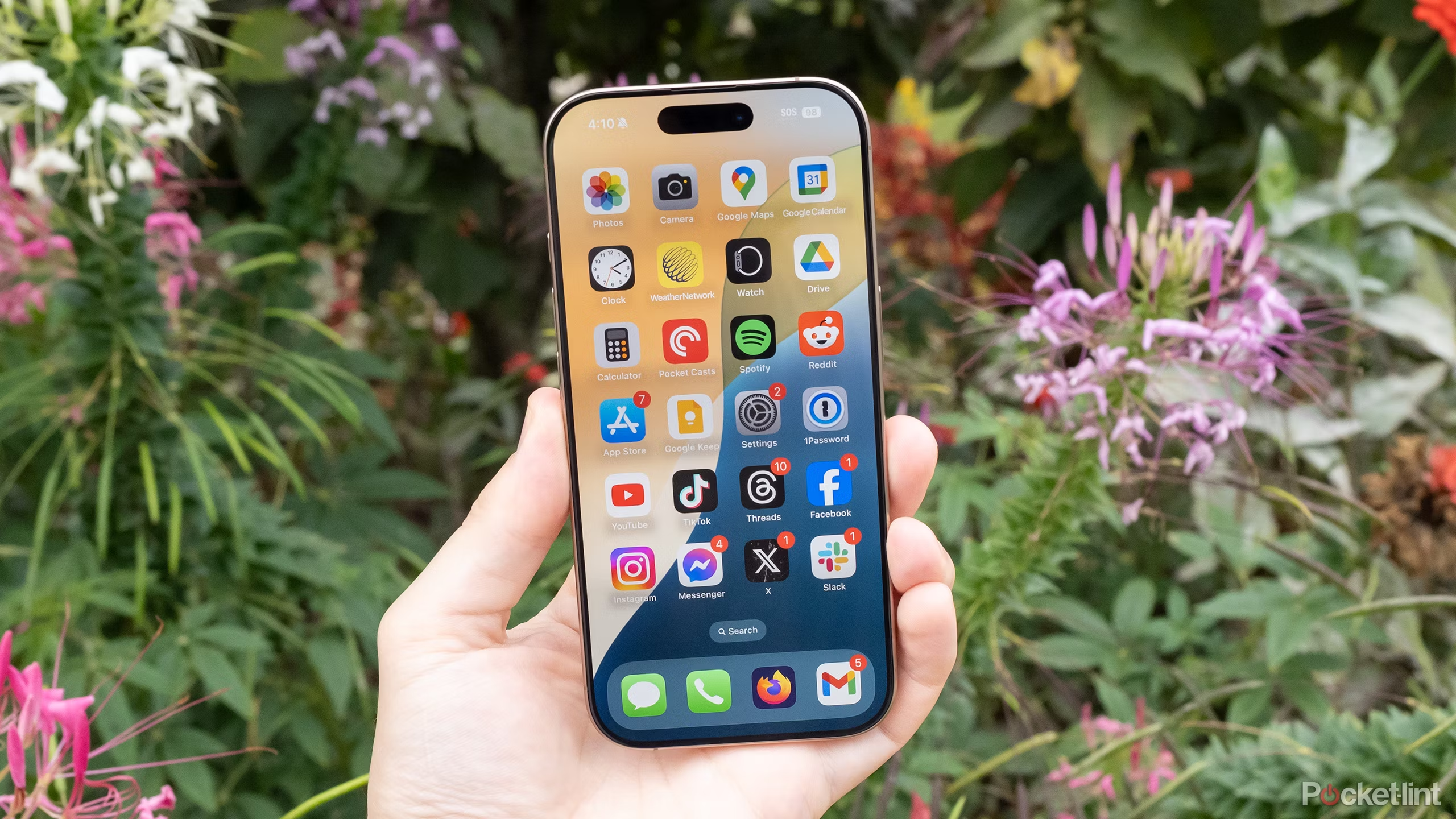
Key Takeaways
- The Camera Control button is great but the iPhone 16 Pro lacks major visual upgrades over the iPhone 15.
- Apple Intelligence’s features are delayed, making the iPhone 16 Pro not a significant upgrade.
- The A18 Pro chip offers powerful performance, but potential battery life concerns may arise with Apple Intelligence.
Apple’s iPhone 16 Pro is perplexing.
On one hand, there’s a lot to like about the phone. It features a new camera shutter button, the most exciting and fun addition to the iPhone line in years, notable tweaks to the look of its photos (goodbye, awful HDR post-processing), and truly “pro” features like 4K 120fps video and frame-by-frame color grading. However, it looks nearly identical to the iPhone 15 (and arguably the iPhone 13 and iPhone 14). Adding to this, in a very un-Apple-like move, Apple Intelligence won’t arrive until later this year (with some features coming even later in 2025). Even the cool Siri glowing animation tied directly to Apple’s Glowtime fall hardware event isn’t here yet, making the smartphone feel very incomplete.
With all this in mind, the iPhone 16 Pro doesn’t offer much over last year’s iPhone 15 Pro — unless you’re as sold on the Camera Control button as I am or you’re still using an iPhone 12 or earlier. On the other hand, Apple Intelligence could live up to Apple’s lofty pitch when it releases later this year (and next year). This means you can likely wait at least a few months before pulling the trigger on the iPhone 16 Pro if you’re on the fence about upgrading this year.
This review focuses on the iPhone 16 Pro. However, it includes specs and brief impressions from my time using the iPhone 16 Pro Max. Beyond the display and battery size differences, the iPhone 16 Pro and iPhone 16 Pro Max are identical this year. This review will be updated when more Apple Intelligence features become available.

Recommended
Apple iPhone 16 Pro
Apple’s iPhone 16 Pro line features a few notable upgrades over last year’s iPhone 15 Pro, including a dedicated camera button, a new A18 Pro chip, a bigger screen, and several AI-powered Apple Intelligence features.
- The Camera Control button is great
- The A18 Pro is powerful
- It still features the best phone display
- Apple Intelligence’s features are delayed
- Nearly identical to the iPhone 15
- Camer Control button can be finicky
Price, availability, and specs
Apple’s iPhone 16 Pro starts at $1,000, and the iPhone 16 Pro Max starts at $1,200. Beyond the screen size differences, with the Pro featuring a 6.3-inch 2622 x 1206 resolution and the Pro Max a 6.9-inch 2868 x 1320 resolution, both of Apple’s flagship smartphones are identical. This includes the 5x optical zoom, which was exclusive to the Max last year, though the iPhone 16 Pro Max features a bigger battery. Other display tech specs include a 120Hz LTPO Super Retina XDR screen.
The iPhone 16 Pro is equipped with Apple’s 3nm A18 Pro chip, a 6-core Apple GPU, IP68 water and dust resistance (up to 19 ft or 6m for 30 minutes), and the latest generation of Ceramic Shield glass. Internal storage options are available in 128GB, 256GB, 512GB, and 1TB variants, while RAM remains at 8GB, a point that will surely interest Android purists. In terms of weight, the iPhone 16 Pro comes in at 7.02 oz (199g), and the iPhone 16 Pro Max weighs 8.01 oz (227g).
On the camera hardware side, the iPhone 16 Pro features an array that’s nearly identical to last year’s, including the f/1.8 48-megapixel wide, f/2.8 12-megapixel telephoto, and new for this year, the updated f/2.2 48-megapixel ultrawide. The selfie shooter remains the same as last year at f/1.9 12 megapixels.
This year’s colors include an array of muted options, like “desert titanium,” “natural titanium,” “white titanium,” and “black titanium.” I’m not a big fan of the new desert titanium color, unfortunately. It feels more gold than “desert” and looks very yellow under some lighting conditions. Hopefully, Apple will bring brighter colors to the Pro line at some point (this year’s saturated iPhone 16 hues look awesome). There’s also the new Camera Control button (that Apple doesn’t want you to call a button), arguably the star of this year’s iPhone lineup (more on it later).
iPhone 16 Pro build and design
If you remove the Camera control Button, it’s an iPhone 15 Pro in disguise
I could leave this section entirely blank and refer you to my iPhone 15 Pro review from last year because, beyond the new Camera Control button, the iPhone 16 Pro looks identical to the iPhone 15 Pro. First off, the iPhone 16 Pro’s screen has increased to 6.3 inches from 6.1 inches, offering slightly more display space. This is a minor change that most people won’t notice, and more importantly, the phone is still easy to hold with one hand. But the iPhone 16 Pro Max? That’s another story. The device feels positively unwieldy to me at 6.9 inches, an increase from the iPhone 15 Pro’s 6.7 inches. A lot of people like big phones, but I’m not one of them, and the iPhone 16 Pro Max solidifies this.
The volume rockers, power button, Action Button, titanium sides, rear camera bump, and more are all identical to last year’s iPhone 15 Pro. That’s not to say that the iPhone 16 Pro is a bad-looking device. In fact, it’s still one of the most solid-feeling smartphones out there; it just looks the same as last year’s smartphone (and arguably the iPhone 13 Pro and the iPhone 14 Pro). Given Apple has adopted this style for a few years now, it’s time for at least a minor visual revamp. Even the iPhone 16 got a fun new camera bump this year.
iPhone 16 Pro display
This is still the best smartphone screen out there
Apart from the size change, the iPhone 16 Pro features reduced bezels, offering a slightly more immersive, modern look. The screen remains one of the best out there, thanks to its 120Hz silky smooth performance, which the iPhone 16 still unfortunately lacks (at this point, it’s ridiculous that the base-level iPhone doesn’t feature at least a 90Hz refresh rate display). Brightness comes in at 1,000 nits, with peak brightness hitting 2,000 nits, making the iPhone 16 Pro’s screen easy to view even under bright outdoor conditions. I also appreciate that the display can now go down to just 1 nit of brightness, because it makes late-night doom-scrolling on Reddit a less annoying experience for my partner.
I’ve used a lot of smartphones this year, including the Galaxy S22 Ultra and the Pixel 9 Pro XL, and the iPhone 16 Pro still features my favorite-looking smartphone display.
I’ve used a lot of smartphones this year, including the Galaxy S22 Ultra and the Pixel 9 Pro XL, and the iPhone 16 Pro still features my favorite-looking smartphone display. Its colors are tuned to be vibrant yet subdued, and regardless of what’s on the screen — whether I’m playing games, watching a movie, or just surfing the internet — everything looks great.
iPhone 16 Pro camera
Apple wants you to decide what your photos look like
The camera is where most of the iPhone 16 Pro’s upgrades are. First, there’s the capacitive Camera Control button. Camera Control (which the iPhone 16 also features because it’s tied to Apple’s Google Lens-like Apple Intelligence AI identification feature) allows you to launch the camera and snap photos with a single press. You might be thinking, “But I programmed the Action Button to do that last year — why does this need to exist?” This is where things get interesting. By half-pressing and double-pressing the Camera Control, you launch different Photographic Style and tone adjustment settings that fundamentally shift the look of the iPhone’s images. You can also change the zoom by swiping to access other features like depth and exposure, all directly from the easy-to-access button.
The Camera Control is admittedly a little finicky, and I still find myself reaching for the screen more often than I’d like, but it’s fun, and in an industry full of boring smartphones, I appreciate this.
The Camera Control button is admittedly finicky, and I still find myself sometimes reaching for the on-screen controls more often than I’d like, but it’s fun and genuinely compelling. In an industry full of boring smartphones, I appreciate this. I think over the next few days and weeks, I’ll find it difficult to go back to only using on-screen camera controls, especially when the more traditional two-stage shutter feature launches later this year. I hope this makes the iPhone 16 Pro feel like an advanced point-and-shoot camera in the best way possible. On another note, I often accidentally press the Camera Control button, causing the display to light up, which can be frustrating at times.
The iPhone 16 Pro and iPhone 16 are set to the Natural Photographic Mood.
Before delving deeper into Photographic Styles, let’s unpack what this shift means for photography on Apple’s smartphones. Every high-end smartphone snaps solid pictures at this point, but each features a slightly different style. For example, Samsung’s Galaxy S24 Ultra features tones that are saturated and very out-there, the Pixel 9 Pro XL offers muted but very true-to-life photos (with a huge emphasis on AI), and the iPhone 15 falls somewhere in between — though Apple’s highlights and insistence on brightening everything in a photo have been disappointing for the last few years. Adding to this, its take on the sky has been rather out of this world lately.
The majority of the above images are shot in the Natural Photographic Style.
With Photography Styles, that’s a thing of the past. They allow you to tweak images exactly how you want them. Would you prefer your images to be a little warmer? Then Gold or Amber is what you’re after. Maybe you’d rather have shadows and contrast return to your iPhone 16 photos? Then Natural, my favorite “Mood,” is for you. You can tweak the look of photos exactly how you want, including the skin tone, shadows, and more, both before and after you snap a shot. It’s also possible to tone down Apple’s very aggressive HDR considerably or ditch it entirely, which, as far as I’m concerned, is the iPhone 16 Pro’s secret killer feature. This can be done through Apple’s Photographic Styles and Moods, but you can also adjust the “Tone,” “Color,” and “Palette” manually for each of these settings (unfortunately, the d-pad-like control for custom color and tone is difficult to use).
It’s as if [Apple] said, “Oh, you don’t like what iPhone photos look like? Well, figure it out yourself…”
It’s an amazingly versatile system, but it also feels like Apple is admitting defeat. It’s as if the company said, “Oh, you don’t like what iPhone photos look like? Well, figure it out yourself,” which goes against the tech giant’s core ethos of telling consumers what they want before they even know they want it. This is a very un-Apple-like change that I’m fond of, and I’ve had a blast tweaking my photos and figuring out the Photographic Style and settings I prefer. Shadows and reasonable highlights are back in my iPhone 16 Pro photos, and I’m here for it.
There are a few issues, though. First, the automated process that allows you to set your chosen Photographic Style is clunky and only permits you to select from five “undertone” options during the initial setup. Apple states that these undertones focus on how skin appears in pictures, but in my experience, they affect every aspect of the photo. “Natural” is not included in this menu because Apple considers it a “Mood,” and these can only be selected after you shoot the photo or with the Camera Control button. To get around this, you need to set your default Photographic Style/Mood through an option buried in the Camera settings in the Settings app. It’s also important to note that while there are new Photographic Styles and Moods, the ability to change photos in this manner isn’t new to the iPhone and has been around for several years.
What’s different this year is that you can adjust your photos after you’ve shot them, thanks to Apple shifting the order of its photographic pipeline. It’s also smarter and can differentiate between faces, the sky, and other objects. However, these images can only be shot in HEIF, a file format that doesn’t always play nice with apps outside of Apple’s ecosystem. That said, I haven’t run into any issues with the file type yet. Hopefully, Apple will update photographic styles to work with standard JPEGs.
You could argue that you can achieve the same effect with earlier iPhones by using the third-party Halide camera app and playing with Apple’s older photographic styles or photo editing apps like Lightroom CC. The images probably won’t look quite as good unless you really know what you’re doing, but it’s something you can do with an iPhone 15 Pro, for example. That said, if you’re a photography nerd like me, you’ll find a lot to appreciate about the iPhone 16 Pro and Apple’s reworked photo pipeline.
The final photography question surrounding the iPhone 16 Pro is whether it shoots better-looking photos than the iPhone 16. Like in years past, Apple’s Pro iPhones offer more vibrant colors and substantially more contrast, but the difference isn’t monumental. You really need to look at the images side-by-side to see the difference (see the gallery below).
All of the above iPhone 16 Pro/iPhone 16 Pro images were snapped with the “Natural” Photographic Style.
While the iPhone 16 Pro’s wide and telephoto lenses remain the same (although the iPhone 16 Pro now features 5x optical zoom), similar to Google’s Pixel 9 Pro XL refresh, Apple updated the ultra-wide shooter to a 48-megapixel f/2.2 sensor. The new ultra-wide lens captures slightly sharper images, but the upgrade isn’t monumental.
Switching gears to video, the iPhone 16 Pro can shoot incredibly crisp 4K 120fps video, allowing you to lower the frame rate and turn your clip into slow-motion video (check out the video above). Samsung has offered similar slow-motion features with its S series devices for a few years, but it’s great to see it come to the iPhone, and I find I prefer the iPhone 16 Pro’s video quality over the Galaxy S24 Ultra’s. The new audio mix feature that removes background audio from videos with the “Studio” option or increases the volume of people talking through “In-Frame,” also works surprisingly well. However, it’s not a feature I’ll likely use very often (I’ve been using Hollyland’s Lark M2 wireless lav mic for recording audio with my iPhone). I can see the voice isolation coming in handy if I happen not to have a lav mic handy.
iPhone 16 Pro performance
The A18 Pro chip is a powerhouse
Apple’s A-series mobile chips have been overkill for years, and the iPhone 16 Pro’s A18 Pro is no exception. Whether I’m playing high-end games like Assassin’s Creed Mirage, editing photos in Lightroom CC, browsing the internet, or watching high-resolution content on Apple TV+ (on a side note, I still think Apple’s streaming service is one of the best around), I didn’t encounter a single instance of lag during my roughly week-long experience with the iPhone 16 Pro.
If benchmarks are your thing, the iPhone 16 Pro scores 3,386 for single-core and 8,401 for multi-core performance, a mark slightly above last year’s A17 Pro. I didn’t run a formal battery test, but I’ve found the battery life to be a bit better than last year, thanks to both phones featuring larger cells. I still had about 30 percent battery left in the evening after a day of heavy use that included snapping a lot of photos. The iPhone 16 Pro Max likely also features improved battery life, though I haven’t tested it (other reviews indicate this is the case).
When Apple’s AI platform launches, will it deplete the iPhone 16 Pro’s battery life, given that it runs across nearly all of iOS 18? We don’t know yet…
However, there’s one caveat to the excellent battery life — Apple Intelligence. When Apple’s AI platform launches, will it deplete the iPhone 16 Pro’s battery life, given that it runs across nearly all of iOS 18? We don’t know yet, but hopefully, that won’t be the case. Finally, Apple has also updated the iPhone 16’s MagSafe charging to be Qi2 compatible and to charge at up to 25 watts, which is a welcome addition. I ditched wireless charging a few months ago because I found it too slow, but for those living in a wireless world, this is a great charging upgrade.
iPhone 16 Pro software
iOS 18 offers fun customization features, but Apple Intelligence still hasn’t launched
iOS 18 includes fun new features such as the ability to change the color of the home screen with wild tints, although they can look awful. The highly customizable Control Center can feel like a mess at times. You can also arrange icons on the Home screen however you want. In an unexpected twist, Apple now lets you make your iPhone 16 Pro look as unappealing as you desire, which is a departure from the company’s typically controlled ethos surrounding its devices. This isn’t Steve Jobs’ Apple anymore, and that’s very clear with iOS 18 and its somewhat wacky customization options. iOS 18 also includes support for RCS, which improves texting with Android users.
Overall, I’m not getting much out of the beta version of Apple Intelligence’s features, similar to my experience with Google’s Gemini and the Pixel 9.
While iOS 18 offers several new features, it’s also missing Apple Intelligence at launch. It feels like Apple planned to release the iPhone 16 line and iOS 18 alongside Apple Intelligence, but launch schedules didn’t line up. Will features like Writing Tools, AI generation app “Image Playground,” AI emoji creator “Genmoji,” and a more contextual Siri be useful? We won’t know until later this year for some features and 2025 for others. Overall, I’m not getting much out of the beta version of Apple Intelligence’s features, similar to my experience with Google’s Gemini and the Pixel 9. Still, I need to try the final version of these tools before knowing for sure, and it’s unclear when they’ll finally arrive.
Should you buy the iPhone 16 Pro?
If you own an iPhone 14 Pro or iPhone 15 Pro, you can sit out this year — or at least wait for the arrival of Apple Intelligence. I really like the Camera Control button and the way Apple handles Photographic Styles and Moods with the iPhone 16 Pro, but these features cater to my specific interest in smartphone photography and address my core complaints about how the iPhone 15 Pro processes images. If this resonates with you, upgrading to the iPhone 16 Pro or iPhone 16 Pro Max might be worth it. After all, the best camera is the one you have with you all the time, and my iPhone is nearly always with me.
The iPhone 16 Pro is clearly for people still using earlier devices like the iPhone 12 and, to a lesser extent, the iPhone 13. If you fall into that camp, you’ll find a lot to like about the iPhone 16 Pro line. Everyone else can wait until next year.
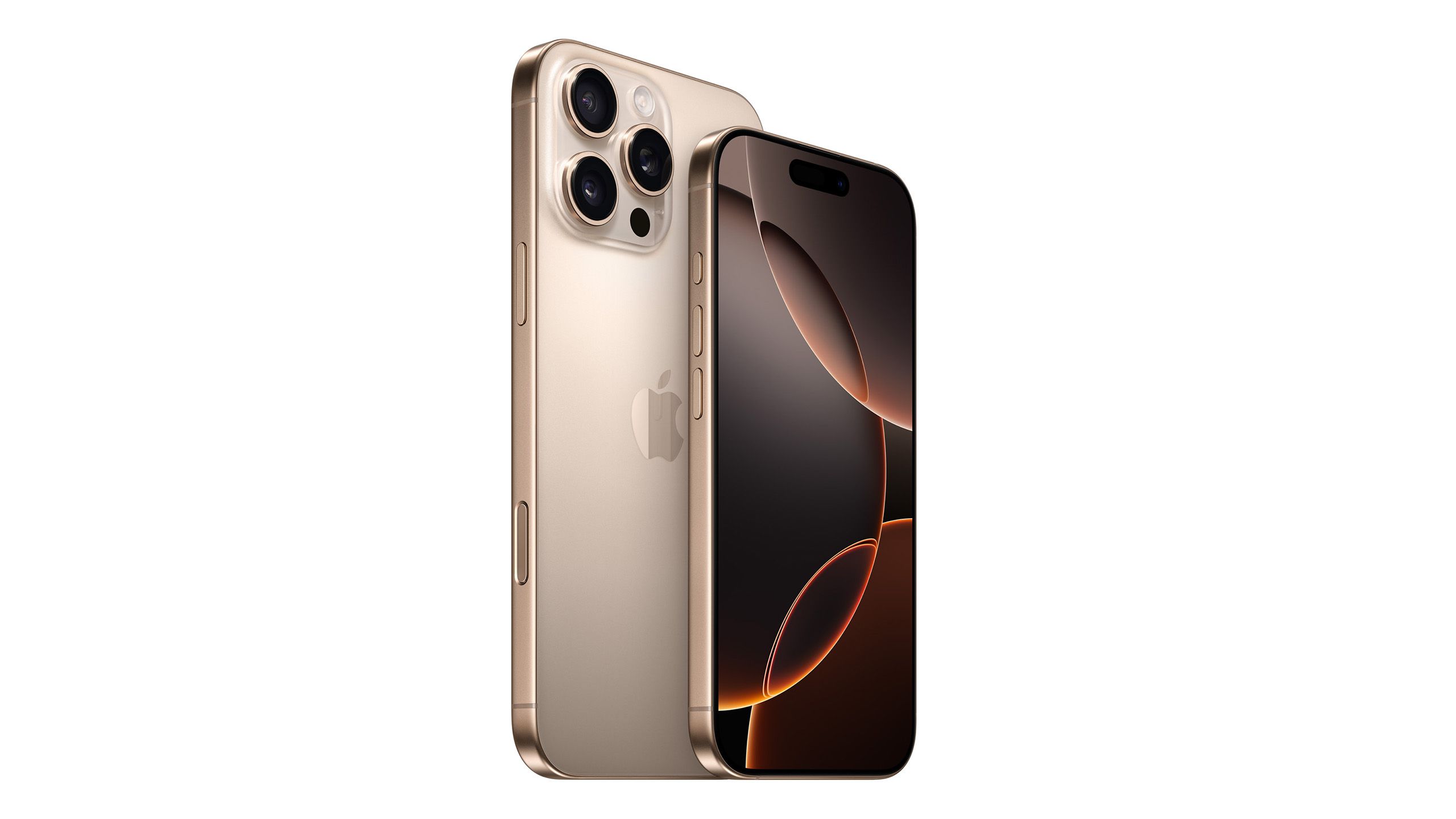

Recommended
iPhone 16 Pro
Trending Products

